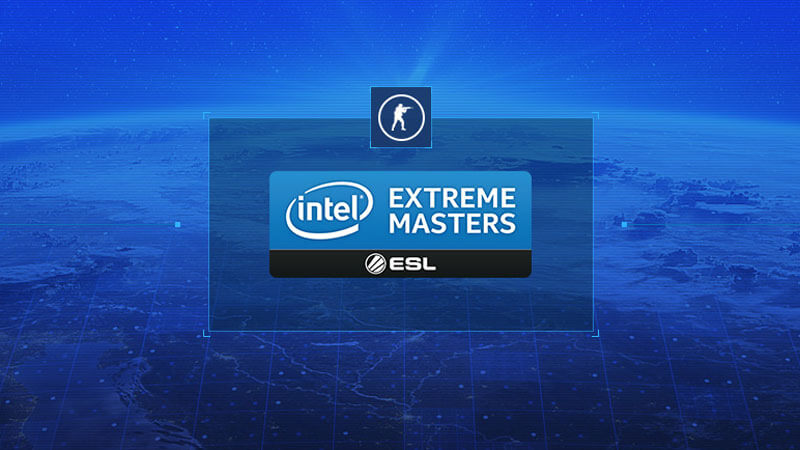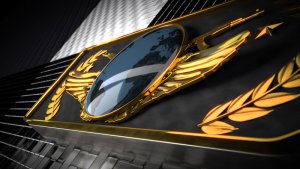The Intel Extreme Masters
The Intel Extreme Masters is a series of international esports tournaments held in various locations across the globe. The tournaments cover several esport disciplines, with the world’s best players in League of Legends, Counter Strike: Global Offensive and Starcraft 2, as well as Hearthstone and Quake Live. Its geographical reach is vast too, with events having been staged in China, Australia, Poland, the UAE and Germany during its history. Sponsored by computing giant Intel, the Electronic Sports League (ESL) runs the competitive gaming side of the operation, with all tournaments falling under its jurisdiction.
The event is the longest-running pro gaming tournament in the world, having been in existence since 2006. The concept has established itself as one of the main highlights of the international esports calendar during its existence. Here, you can read a summary of the Intel Extreme Masters, and gain a flavour of the history and excitement which surrounds this iconic event.
Making History
The concept of the Intel Extreme Masters was first devised in 2006, when the tournament, which was already sponsored by Intel, saw an opportunity to expand outside of Europe. North America was seen as potentially very fertile ground for the concept, and Intel agreed, providing the financial backing to set up a tournament with a truly global reach.

The following year, 2007, a format was established for the concept which saw a number of smaller qualifying tournaments held, all of which fed into a final, main event. The finals were held at the German computer fair CeBit, which takes place in Hanover every year.
Counter Strike was the only game offered in that first season, but the range of games has increased over the tournament’s history. The event now brings together the top esports teams from Europe, North America and Asia in a range of different disciplines.
Season One – Where It All Began
The first season of the tournament, in 2006, saw teams compete in two esports disciplines: CSGO and World of Warcraft III. Competitors from 24 different European countries participated in this first event, with the prize pool set at €160,000.
Poland’s Team Pentagram triumphed in the CSGO event, beating H2K Gaming into second place, and taking home the first prize of €40,000. Fnatic and SK Gaming completed the tournament’s top four. When it came to Warcraft, Frenchman Yoan ‘ToD’ Merlo took the title.
Season Two – New Horizons
After its initial season in 2006, 2007 was the year in which the Intel Extreme Masters began to expand. Prize money totalling $285,000 was on offer for the best players in CSGO and Warcraft. The concept’s Global Challenges also travelled across the Atlantic for the first time, with players from North America and Asia able to strive for qualification for the Masters Finals for the first time. The first of these Gobal Challenges was held in Los Angeles.
The skills on show from the players at the Intel Extreme Masters also reached new heights. The winners of the CSGO World Championship in 2007 were German outfit Mousesports, who won the $50,000 first prize. Second amongst the IEM CSGO teams were e-STRO, while Team ALTERNATE and SK Gaming were in third and fourth place respectively. The IEM also had its first Asian champion, with South Korea’s June ‘Lyn’ Park taking home the Warcraft III title, along with $20,000. The champion from the previous year, ToD, was in second place, winning $10,000.
Season Three – Reaching Across the Globe
The third season of the concept saw its geographical reach expand even further, though there were still only CSGO and World of Warcraft tournaments being played. The year featured nine events, staged on three continents, with tournaments taking place in Asia North America and Europe. Total prize money rose again, to a massive $750,000. Events were staged in Chengdu, Philadelphia, Seoul and Dubai, as well as Montreal, Los Angeles and Leipzig.
The final World Championship event was held in Hanover once again, in March 2009. The CSGO first prize of $50,000 was claimed by Swedish outfit Fnatic, with MyM in second place. South Korea’s H O N took the World of Warcraft title, beating SK Gaming’s Korean team into second place. Their British team came fourth, behind aAa nawaK in third.
Season Four – Striding Further Afield
The fourth incarnation of the event saw some new cities staging tournaments, with Taipei hosting the Asian Championships, and the North American Championships making its way to Edmonton in Canada. But, despite the concept spreading its wings into Asia, it would be North American and European teams who would dominate the finals standings, come the end of the season.
The CSGO title was taken, in March 2010, by Ukrainian team Natus Vincere, who beat Fnatic into second place, and claimed the $50,000 first prize. Fnatic’s fellow Swedes SK Gaming were third, and USA team Evil Genuses in fourth. For the World of Warcraft tournament, the Evil Geniuses were top, winning $25,000, with Team Dignitas in second.
This year’s edition of the concept was the first time that Quake Live was included as one of the esports on offer. American Shane ‘rapha’ Hendrixson took home the inaugural title in this discipline, along with the first prize of $10,000.
Season Five – Travelling to the Stars
The fifth year of the concept saw it expand again, this time in terms of the games which were being played for the total prize fund of $400,000. Starcraft 2 was introduced, alongside CSGO, World of Warcraft and Quake Live. Real time strategy was now very much on the menu, alongside the other offerings. The final event of the season also featured a League of Legends invitational tournament, which was a hint of things to come, with IEM LoL tournaments set to grace the concept in future years.
Events were staged in Shanghai, Cologne, New York and Kiev, as well as the World Championships in Hanover. Natus Vincere successfully defended their CSGO title, beating Frag eXecutioners into second place. South Korean players dominated the Starcraft 2 event, with Jung “AcE” Woo-Seo of Team StarTale taking the title. His fellow Koreans Jang ‘moon’ Jae-ho came second, and Park ‘Squirtle’ Hyun Woo third. The previous season’s Quake Live champion, rapha, successfully defended his title in Hanover. The first IEM LoL invitational was won by German team myRevenge.
Season Six – Legends Are Being Made
The 2011 to 2012 season saw the IEM take more strides forward. Following the successful invitational event at Hanover in the previous season, League of Legends was introduced as one of the main games. The first IEM LoL champion was Russian team Moscow 5, who won $50,000 and beat Team Dignitas into second place. That victory followed on from Moscow 5’s win in the Global Challenge in Kiev.
ESC Gaming, from Poland, emerged as the CSGO champions, with Natus Vincere delivering another strong performance to come second. The Starcraft 2 title was taken by a Korean again, with Jang ‘MC’ Min-Chul winning the $35,500 first prize.
Season Seven – South Korean Stars
For the first time, there was no CSGO title at stake in the IEM season, with Starcraft 2 and League of Legends being the only games for which titles were played in 2012-2013. Global Challenges were held in Singapore and Katowice, amongst other venues. The IEM Katowice SC2 title was taken by another South Korean, in the shape of Kang ‘First’ Hyun-Woo, who won $6,500 in Poland. He would come second at the World Championship, with fellow countryman Choi ‘YoDa’ Byung-Hyun winning the title, along with $30,000.
South Koreans also dominated the IEM LoL World Championship at the end of the season. South Korean team CJ Entus provided both the first and second places at the tournament in Hanover, with their Blaze team beating their Frost team in the final. Russia’s Gambit Gaming came third, but it was more Koreans in fourth, with SK Telecom T1 making up the numbers.
Season Eight – Fresh Fields
The eighth season of the IEM saw the final events moved away from CeBit for the first time, and staged instead in Katowice in Poland, in the Spodek Arena, which attracted another huge crowd. Hearthstone was also added to the agenda for the first time, with it being played alongside League of Legends and Starcraft 2: Heroes of the Storm. The total prize money on offer rose again, this time to $605,000.
The IEM LoL title was won by Korean outfit KT Rolster Bullets, who beat Fnatic in the final, and won $60,000. American team Cloud 9 HyperX were in third, and Russia’s Gambit Gaming in fourth. Kim ‘SoS’ Yoo-jin won the SC2 title, beating Choi ‘Polt’ Seong Hun in the final. The Hearthstone: Heroes of Warcraft exhibition event, held in Katowice alongside the World Championships in the other two games, saw Polish player Gnmish win the title.
Season Nine – Bigger Bucks than Ever
Shenzen, Toronto, San Jose, Cologne and Taipei all hosted events during the ninth season of the IEM, which took place in 2014-2015. League of Legends and Starcraft 2 were the two games in which teams competed for a total prize pool of $535,000 for the year.
The LoL title was taken by Americans Team SoloMid, with Chinese outfit Team WE in second. First prize for this season’s tournament was $108,414, with second prize being $30,000. South Korea once again dominated the Starcraft 2 World Championship. Joo ‘Zest’ Sung Wook won the event, and another three Koreans, Cho ‘Trap’ Sung Ho, Jung ‘Bbyong’ Woo Yong and Park ‘Dark’ Ryung Woo completing the line-up in the tournament’s top four.
Season Ten – The Return of CSGO
The Intel Extreme Masters marked the tenth year of its existence by offering a total prize pot of $993,200, with players competing in SC2, LoL and Heroes of the Storm. CSGO also made a return to the event’s schedules. The final tournaments of the series made a return to the Spodek Arena in Katowice, and a bumper crowd was rewarded with some fine performances from the competing teams.
Fnatic finished top of the IEM CSGO teams at the World Championship, beating Luminosity Gaming’s Brazilian team into second place, and claiming winnings of $104,000. South Korea’s SK Telecom T1 took the LoL title, along with $50,000, beating Fnatic in the final. South Korea also won glory in the SC2 event, with Choi ‘Polt’ Seong Hun taking home the first prize of $35,000, with Norwegian player Jens ‘Snute’ Aasgaard finishing in second.
Season Eleven – Bigger Than Before
The eleventh season of the Intel Extreme Masters saw events take place in Shanghai, Oakland and Katowice, as well as in Gyeonggi, South Korea, for the first time. The final stage, in Katowice, also took place over two weekends for the first time.
South Koreans were, yet again, the dominant force in Starcraft, with all four of the semi-finalists coming from that country. The champion turned out to be Jun “TY” Tae Yang, with Kim ‘Stats’ Dae Yeob in second place. Team Astralis took home the first prize of $118,903.85 for the Counter Strike title, coming top out of the IEM CSGO teams. Faze Clan were in second. Flash Wolves took home the LoL first prize of $78,942.31, with G2 Esports in second.
The Intel Extreme Masters continues to move from strength to strength. The IEM CSGO teams continue to put in great performances, while the competition amongst the LoL teams and Starcraft players is as fierce as ever. More cities, more tournaments and more prize money, are certain to be on the horizon in the coming years.
























 EN Global
EN Global  BR Português
BR Português